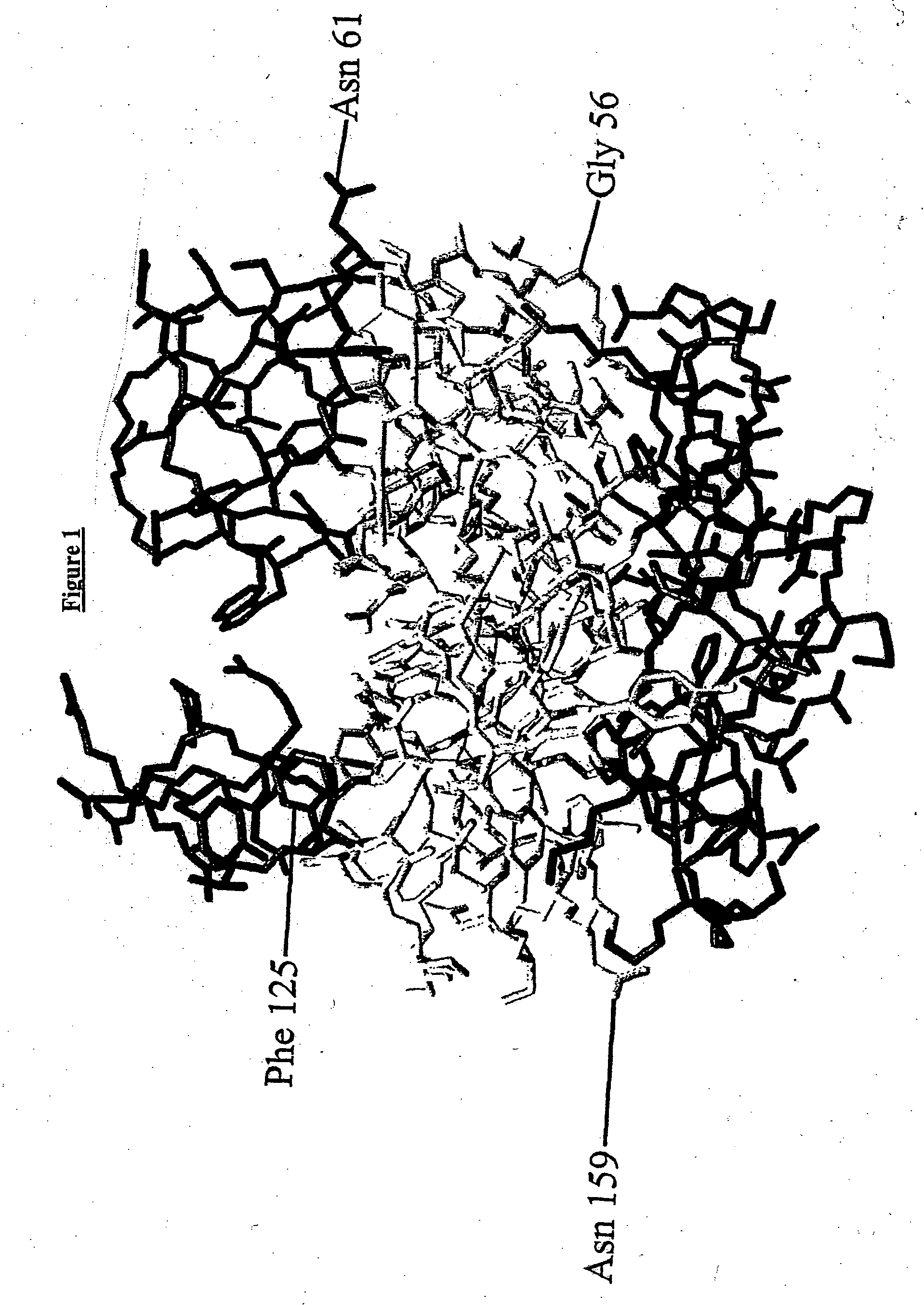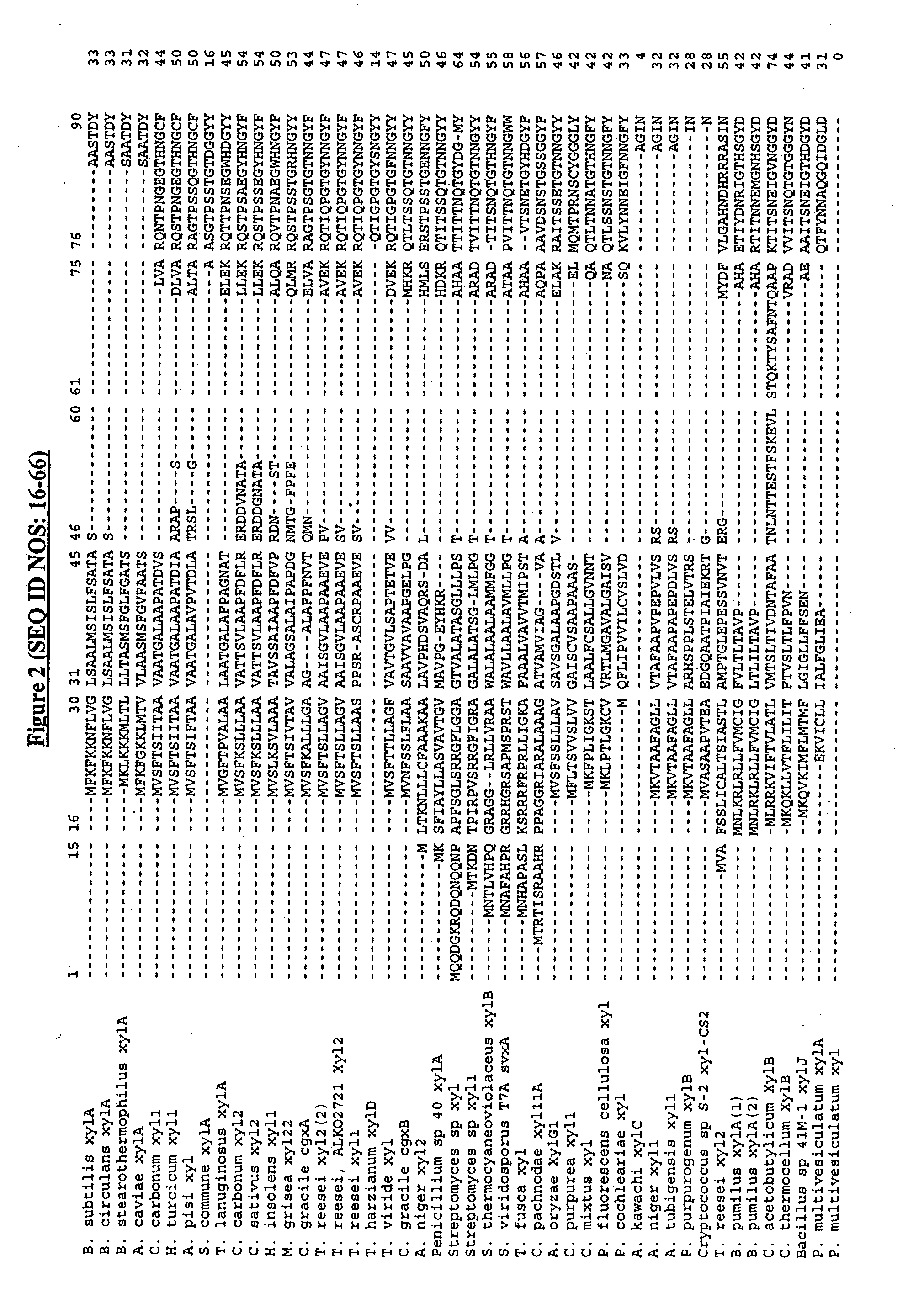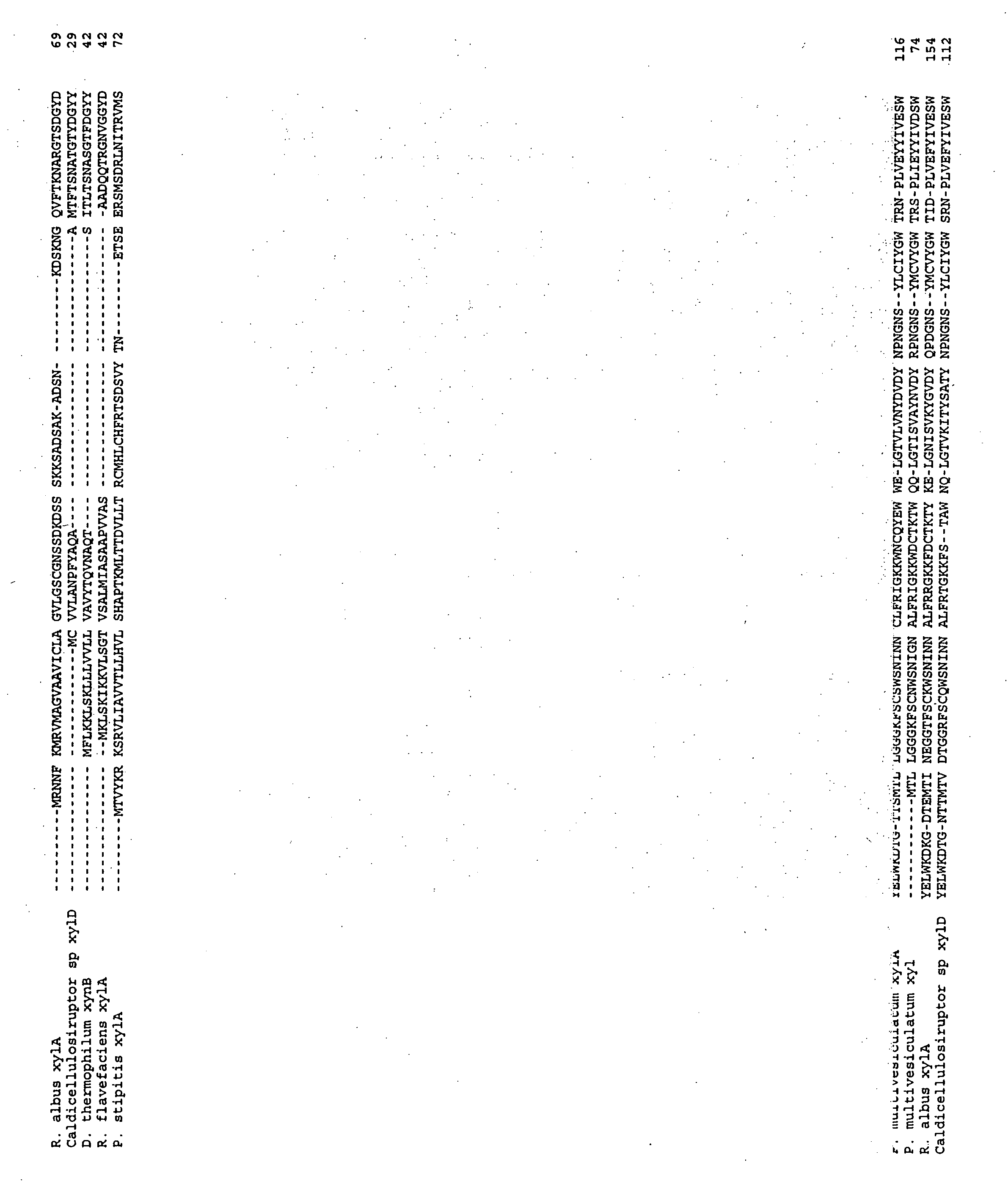Enzyme
a technology of xylanase enzyme and xylanase, which is applied in the field of xylanase enzyme mutation, can solve the problems of translation of amino acid sequence differences into differences in the functionality of xylanases, and achieve the effects of reducing sensitivity, determining the functionality of xylanase enzymes, and altering the viscosity of materials
- Summary
- Abstract
- Description
- Claims
- Application Information
AI Technical Summary
Benefits of technology
Problems solved by technology
Method used
Image
Examples
example 1
Purification and Characterisation of Wheat Endogenous Xylanase Inhibitor
[0159] 2 kg wheat flour (Danish reform, batch 99056) was extracted with water, using a flour:water ratio of 1:2, during 10 minutes of stirring. The soluble endogenous xylanase inhibitor was separated from the flour-water slurry by centrifugation. The extraction and centrifugation was performed at 4° C. The inhibitor was purified from the water extract by the following chromatographic techniques and concentration techniques: HPLC-SEC, HPLC-CIEC, rotary evaporation, HPLC-HIC, HPLC-SEC and rotary evaporation. The xylanase inhibitor could be monitored and quantified during purification, using the following quantification method.
Inhibitor Quantification Method
[0160] 1 XIU (Xylanase Inhibitor Unit) is defined as the amount of inhibitor that decreases 1 TXU to 0.5 TXU under the conditions described below.
[0161] The xylanase used in this assay is Bacillus subtilis wild type xylanase.
[0162] 250 μl xylanase solution...
example 2
Fractionation and Reconstruction of Wheat Flour Free of Xylanase Inhibitor and Xylanases Functionality in This Flour as a Function of Added Xylanase Inhibitor
Flour Fractionation and Reconstitution
[0165] The flour used was: Danish Reform flour, batch No 99056. The fractionation, inhibitor inactivation and reconstitution were as follows:
[0166] A simple dough was made by mixing 1600 gram flour, with optimal water addition, according to a baker's absorption at 500 BU and mixing time according to Farinograph results. This resulted in 2512 gram dough. The gluten was manually washed out from the dough, using a water dough ratio of approx. 5:1. The water used was pre-chilled to 4° C. to prevent further enzyme activity in the dough. The resulting wash-water contained the soluble proteins (including the xylanase inhibitor), lipids, non-starch polysaccharides and starch. The starch and other non-soluble components were separated from the wash-water by centrifugation (5000 g, 10 minutes, 10...
example 3
Site-Directed Mutagenesis on Xylanases
[0196] Specific mutants of Bacillus subtilis xylanase may be obtained by site directed mutagenesis of the wild type enzyme, by the use of any of a number of commercially available mutagenesis kits. An example of how to obtain the D11F mutant using the Quick Exchange kit, available from Stratagene Cloning Systems, 11011 North Torrey Pines Road, La Jolla, Calif. 92037, USA is given below:
[0197] The DNA sequence encoding Bacillus subtilis xylanase A has been published by Paice et al., 1986.
[0198] The sequence of the coding region is as follows, with the sequence encoding the mature part of the protein shown in capitals:
catatgtttaagtttaaaaagaatttcttagttggattatcggcagctttaatgagtattagcttgttttcggcaaccgcctctgcaGCTAGCACAGACTACTGGCAAAATTGGACTGATGGGGGCGGTATAGTAAACGCTGTCAATGGGTCTGGCGGGAATTACAGTGTTAATTGGTCTAATACCGGAAATTTTGTTGTTGGTAAAGGTTGGACTACAGGTTCGCCATTTAGGACGATAAACTATAATGCCGGAGTTTGGGCGCCGAATGGCAATGGATATTTAACTTTATATGGTTGGACGAGATCACCTCTCATAGAATATTATGTA...
PUM
| Property | Measurement | Unit |
|---|---|---|
| molecular mass | aaaaa | aaaaa |
| molecular mass | aaaaa | aaaaa |
| pH | aaaaa | aaaaa |
Abstract
Description
Claims
Application Information
 Login to View More
Login to View More - R&D
- Intellectual Property
- Life Sciences
- Materials
- Tech Scout
- Unparalleled Data Quality
- Higher Quality Content
- 60% Fewer Hallucinations
Browse by: Latest US Patents, China's latest patents, Technical Efficacy Thesaurus, Application Domain, Technology Topic, Popular Technical Reports.
© 2025 PatSnap. All rights reserved.Legal|Privacy policy|Modern Slavery Act Transparency Statement|Sitemap|About US| Contact US: help@patsnap.com



